Mastering Customer Experience Optimization in 2025
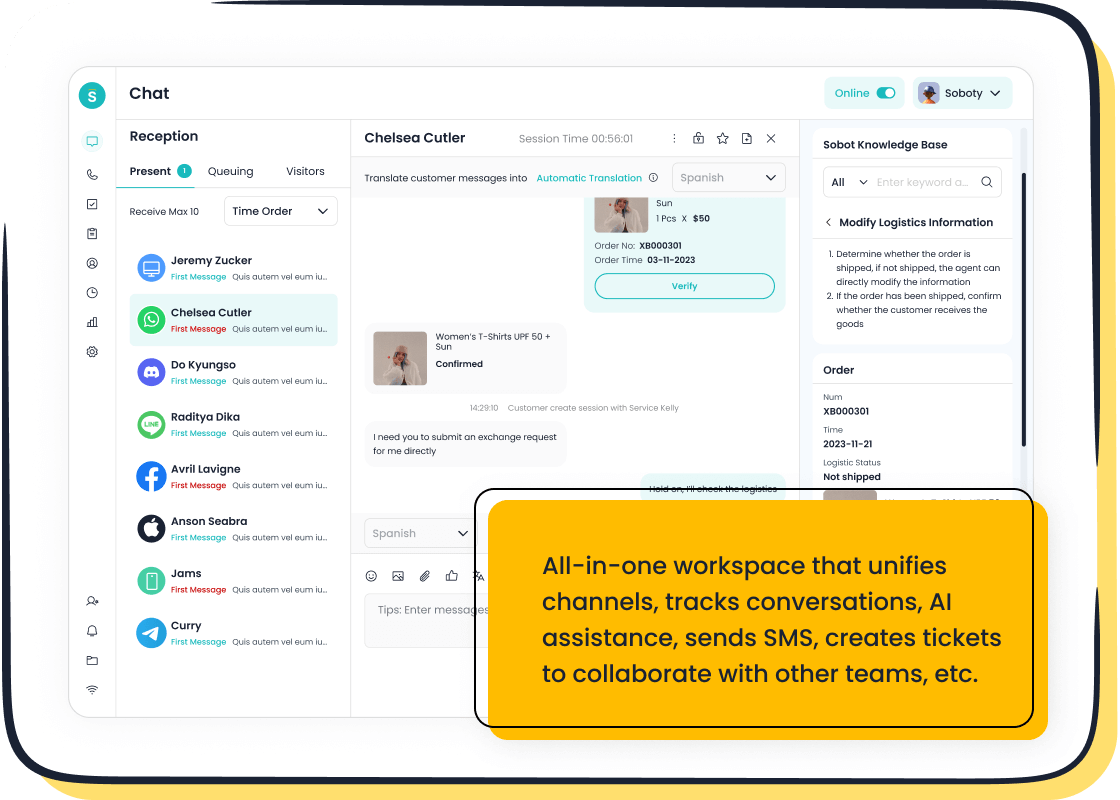
In 2025, customer experience optimization has become a cornerstone of business success. Customers now expect companies to not only meet but anticipate their needs. Research shows that 73% of consumers demand businesses understand their unique preferences, and 90% value immediate responses in customer service. Moreover, 80% of customers now prioritize their experience with a brand as much as its products or services.
To meet these rising expectations, businesses are turning to innovative tools like Sobot's solutions. By leveraging technologies such as AI and omnichannel support, Sobot helps brands deliver personalized, seamless, and efficient experiences. This shift is no longer optional, as 86% of consumers report they will abandon a brand after just two poor interactions.
In this competitive landscape, mastering customer experience optimization is not just a strategy—it’s a necessity for thriving in the modern marketplace.
What is Customer Experience Optimization?
Defining Customer Experience Optimization
Customer experience optimization refers to the process of enhancing every interaction a customer has with your brand to ensure satisfaction, loyalty, and long-term engagement. It involves understanding customer needs, streamlining touchpoints, and delivering personalized experiences that resonate with their expectations.
Why does this matter? Customers with positive experiences are likely to spend 140% more than those with negative ones. Additionally, 77% of consumers believe valuing their time is essential for a great online experience. These insights highlight the importance of optimizing every step of the customer journey to foster loyalty and reduce churn.
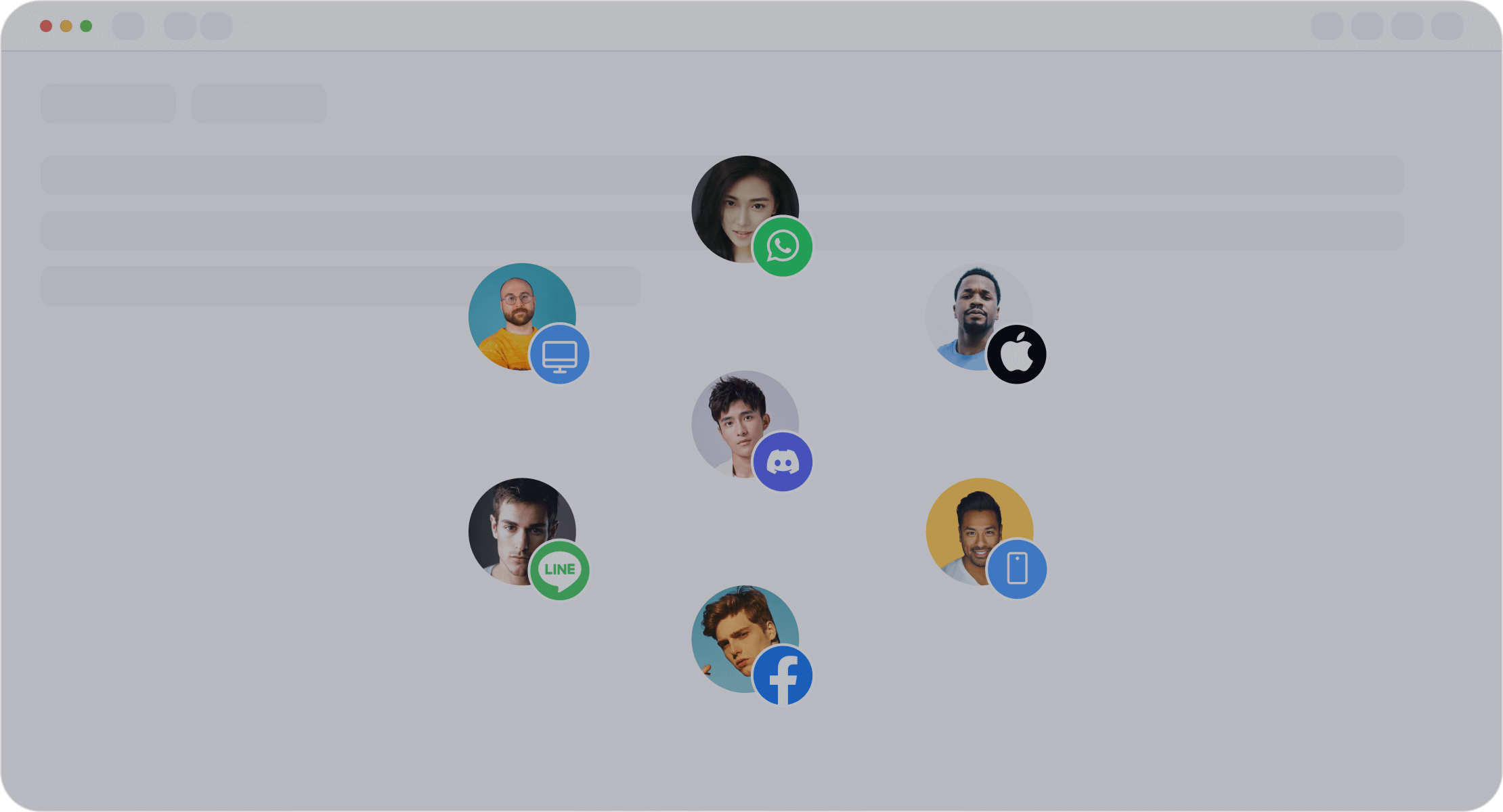
The four pillars of customer experience optimization—personalization, consistency, responsiveness, and accessibility—serve as the foundation for creating meaningful interactions. For example, Sobot’s Live Chat solution embodies these principles by offering omnichannel support, real-time responsiveness, and AI-powered tools to deliver tailored customer interactions. This approach not only enhances customer satisfaction but also drives measurable business outcomes.
The Evolution of CX Optimization Over the Years
Customer experience optimization has undergone a remarkable transformation. In its early days, businesses relied on basic surveys and feedback forms to gauge customer satisfaction. These methods focused on quantitative data, such as satisfaction scores, but lacked depth in understanding customer behavior.
The rise of technology introduced real-time data and advanced analytics, enabling businesses to gain actionable insights. AI and machine learning further revolutionized the field by predicting customer needs and personalizing experiences. For instance, predictive analytics now allows companies to target customers with tailored marketing campaigns, significantly improving engagement and retention.
| Era | Methods Used | Key Developments |
|---|---|---|
| Early Days | Basic surveys and feedback forms | Focus on quantitative data like satisfaction scores |
| Rise of Technology | Real-time data and advanced analytics | Integration of AI and machine learning for insights |
| Personalization | Tailored experiences and customer segmentation | Use of predictive analytics for targeted marketing |
Today, tools like Sobot’s AI solutions empower businesses to optimize customer experience by integrating omnichannel support and scenario-based AI. These advancements ensure seamless interactions across platforms, enhancing customer engagement and reducing churn.
Why CX Optimization is Crucial in 2025
In 2025, customer experience optimization is no longer optional—it’s a business imperative. Companies investing in CX see significant returns. For instance, organizations earning $1 billion annually can expect an additional $700 million in revenue from CX investments. SaaS companies report a $1 billion revenue increase due to enhanced customer experiences. Moreover, 86% of buyers are willing to pay more for exceptional service, with luxury customers paying up to 18% more.
| Statistic | Value |
|---|---|
| Companies earning $1 billion annually can expect additional earnings from CX investment | $700 million |
| Expected revenue increase for SaaS companies from CX investment | $1 billion |
| Percentage of buyers willing to pay more for great CX | 86% |
| Price premium customers are willing to pay for luxury services due to great CX | Up to 18% |
| Buyers who made impulse purchases after personalized experiences | 49% |
| Organizations citing CX as a competitive differentiator | 81% |
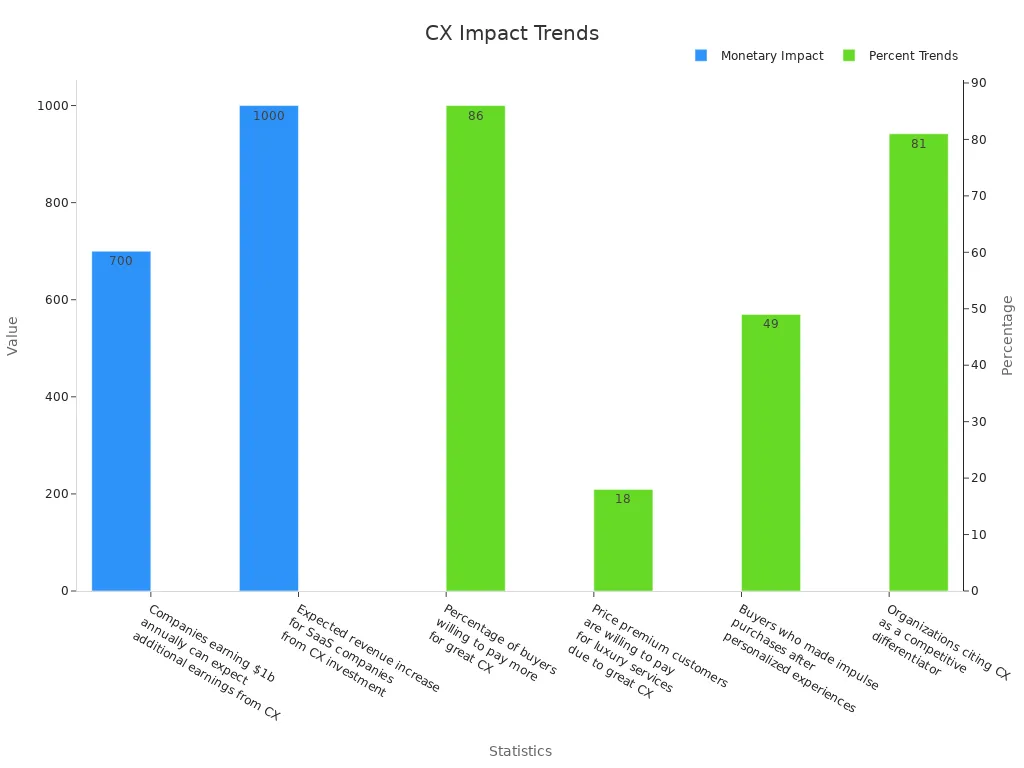
The competitive landscape demands businesses to prioritize CX optimization. Real-time feedback mechanisms improve satisfaction scores by 30% and retention rates by 20%. Predictive analytics reduces churn by 20% and increases customer lifetime value by 25%. These trends underscore the importance of tools like Sobot’s Live Chat, which integrates AI and omnichannel support to deliver exceptional customer experiences.
By optimizing the customer journey, you can build loyalty, reduce churn, and drive long-term success. As McKinsey’s research shows, CX leaders more than double revenue growth compared to laggards. Investing in CX optimization today ensures your business remains competitive in 2025 and beyond.
Key Pillars of Customer Experience Optimization
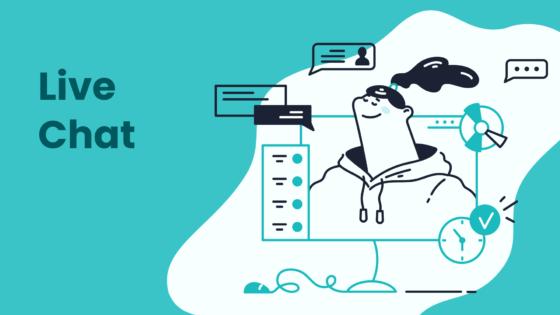
Personalization: Crafting Tailored Customer Interactions
Personalization is the cornerstone of customer experience optimization. It involves creating a unique, personalized experience for each customer by understanding their preferences, behaviors, and needs. This approach not only enhances customer satisfaction but also fosters customer loyalty. For instance, personalized product recommendations contribute up to 31% of e-commerce revenues, while conversion rates can increase by 288% when personalization is effectively implemented.
| Statistic | Value |
|---|---|
| Personalized product recommendations account for e-commerce revenues | Up to 31% |
| Increase in conversion rates due to personalized recommendations | 288% |
| Reduction in cart abandonment with personalization | Up to 4.35% |
| Likelihood of purchase from brands providing personalization | 76% |
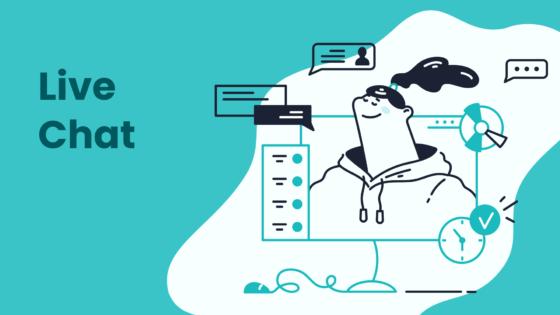
Sobot’s Live Chat exemplifies the power of personalization. By leveraging AI and customer data, it enables businesses to deliver tailored interactions across multiple touchpoints. This not only improves customer satisfaction but also reduces customer churn, ensuring long-term engagement.
Consistency: Delivering Seamless Experiences Across Channels
A consistent experience across all customer touchpoints is vital for building trust and loyalty. Customers expect the same level of service whether they interact with your brand via email, social media, or in-store. Research shows that 90% of consumers demand a consistent experience across all channels, and companies using multi-channel strategies see a 21% revenue increase.
| Statistic | Source |
|---|---|
| 90% of consumers expect a consistent experience across all channels. | Salesforce |
| Companies using multi-channel strategies see a 21% revenue increase. | Invesp |
| Marketers with multi-channel strategies see a 38% higher purchase rate. | Omnisend |
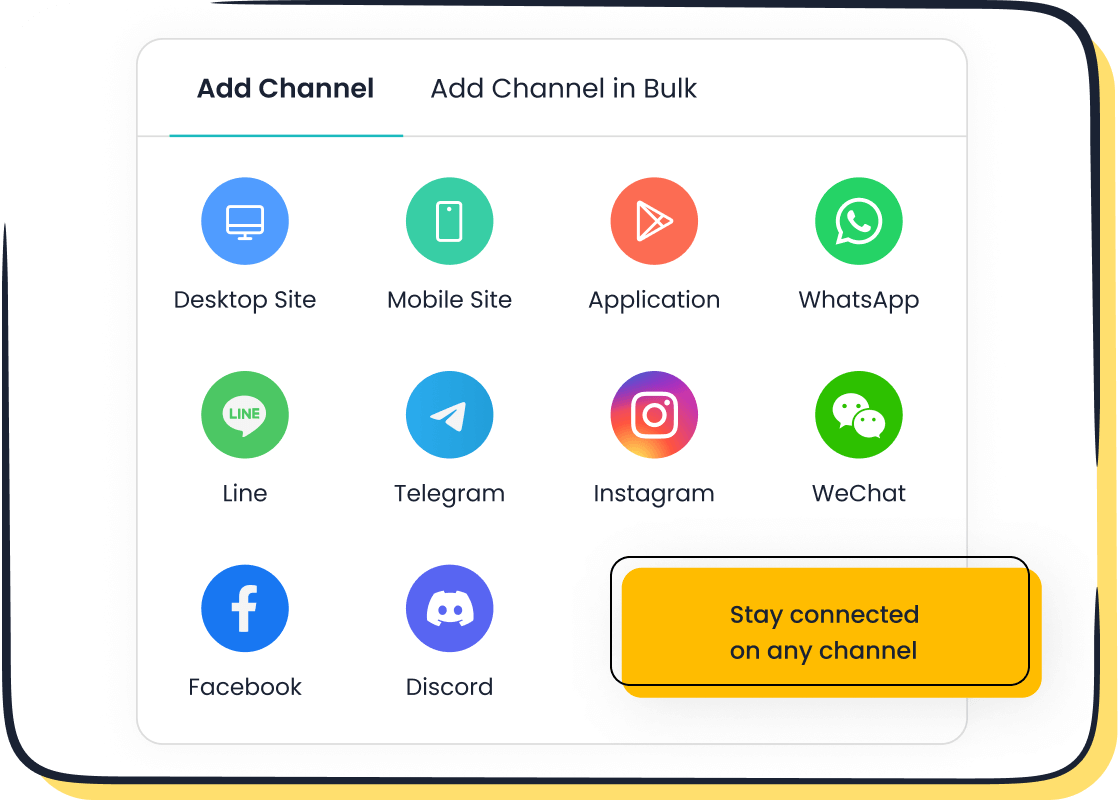
Sobot’s omnichannel Live Chat ensures seamless communication by integrating platforms like WhatsApp, Facebook, and Instagram. This unified approach eliminates fragmentation, allowing you to deliver a consistent experience that strengthens customer loyalty.

Responsiveness: Meeting Customer Needs in Real-Time
Responsiveness is another critical pillar of customer experience optimization. Customers value quick resolutions to their queries, with 90% expecting immediate responses. Real-time support not only enhances customer satisfaction but also reduces frustration, leading to higher retention rates.
- A manufacturing company improved decision-making by integrating real-time data from sales, finance, and operations, enabling agile responses to market changes.
- XYZ Corporation, an e-commerce retailer, created a 360-degree view of customers by integrating data from various platforms. This approach increased conversion rates and customer satisfaction.
Sobot’s Live Chat excels in responsiveness by offering real-time communication across multiple channels. Its AI-powered tools ensure timely responses, helping you meet customer expectations and improve the overall customer journey.
Accessibility: Ensuring Inclusive and User-Friendly Experiences
Accessibility plays a vital role in customer experience optimization. It ensures that every customer, regardless of their abilities or circumstances, can interact with your brand effortlessly. By prioritizing accessibility, you not only comply with ethical and legal standards but also unlock significant business benefits.
Companies that focus on accessibility often outperform their competitors. Businesses that prioritize inclusive design see an average of 28% higher revenue. They also achieve double the net income and enjoy 30% higher profit margins. Enhancing website accessibility alone can boost conversion rates by up to 50%. These numbers highlight the tangible impact of creating user-friendly experiences for all.
To make your brand more accessible, consider adopting tools that simplify interactions. For example, Sobot’s Live Chat supports features like auto-translation and customizable widgets. These tools ensure seamless communication for users across different languages and devices. By integrating such solutions, you can cater to a broader audience while maintaining efficiency.
Accessibility also involves designing platforms that accommodate diverse needs. This includes ensuring compatibility with screen readers, offering text alternatives for visual content, and enabling keyboard navigation. These adjustments make your digital channels more inclusive, fostering trust and loyalty among customers.
Tip: Start by auditing your website or app for accessibility gaps. Tools like Sobot’s built-in analytics can help identify areas for improvement, ensuring your platform meets the needs of all users.
By embracing accessibility, you create a welcoming environment for every customer. This approach not only enhances satisfaction but also drives long-term growth. In 2025, inclusive and user-friendly experiences are no longer optional—they are essential for staying competitive in a customer-centric world.
The Role of the Customer Journey in CX Optimization

Mapping the Customer Journey for Better Insights
Mapping the customer journey allows you to visualize how customers interact with your brand across various touchpoints. This process helps you identify friction points and understand what drives engagement. For example, journey maps can reveal whether slow website loading times or unclear navigation frustrate users. By addressing these issues, you can improve customer satisfaction and loyalty.
A structured approach to journey mapping combines qualitative insights with quantitative data. According to Harvard Business Review, integrating journey mapping with analytics can boost the ROI of improvement initiatives by up to 35%. This method uncovers how customers experience your brand, enabling early detection of pain points. Tools like Sobot’s Live Chat enhance this process by providing real-time data on customer interactions, helping you refine your strategies.
| Insight Type | Description |
|---|---|
| Understanding Customer Interactions | Mapping the journey provides a structured view of customer interactions, identifying where friction occurs and what drives engagement. |
| Identifying Pain Points | Journey maps reveal pain points and opportunities, allowing businesses to visualize the emotional journey customers take. |
| Enhancing Decision-Making | Combining journey mapping with quantitative analysis can significantly increase the ROI of improvement initiatives. |
Identifying Pain Points and Opportunities Along the Journey
Pain points often arise when customer expectations are unmet. These can include financial concerns, such as unexpected costs, or productivity issues, like slow response times. Process-related challenges, such as broken links or confusing navigation, also frustrate customers. Addressing these pain points is essential for creating a seamless experience.
| Type of Pain Point | Description |
|---|---|
| Financial Customer Pain Points | Occurs when a product or service is perceived as overpriced or when unexpected costs arise. |
| Productivity Customer Pain Points | Arises from friction in the customer journey, such as slow website loading times. |
| Process Customer Pain Points | Relates to the convenience of the experience, including issues like dead links or confusing navigation. |
| Support Customer Pain Points | Involves the effectiveness of customer service in resolving issues and providing context-driven support. |
Opportunities often emerge when you analyze customer feedback and behavior. For instance, tracking Net Promoter Scores (NPS) can highlight areas where your brand excels, while Customer Satisfaction (CSAT) surveys pinpoint areas needing improvement. By addressing these insights, you can streamline the customer journey and enhance overall satisfaction.
Enhancing the Customer Journey with Sobot Live Chat
Sobot Live Chat plays a pivotal role in optimizing the customer journey. Its omnichannel capabilities ensure seamless communication across platforms like WhatsApp, Facebook, and Instagram. This integration eliminates fragmentation, allowing you to deliver consistent and efficient support.
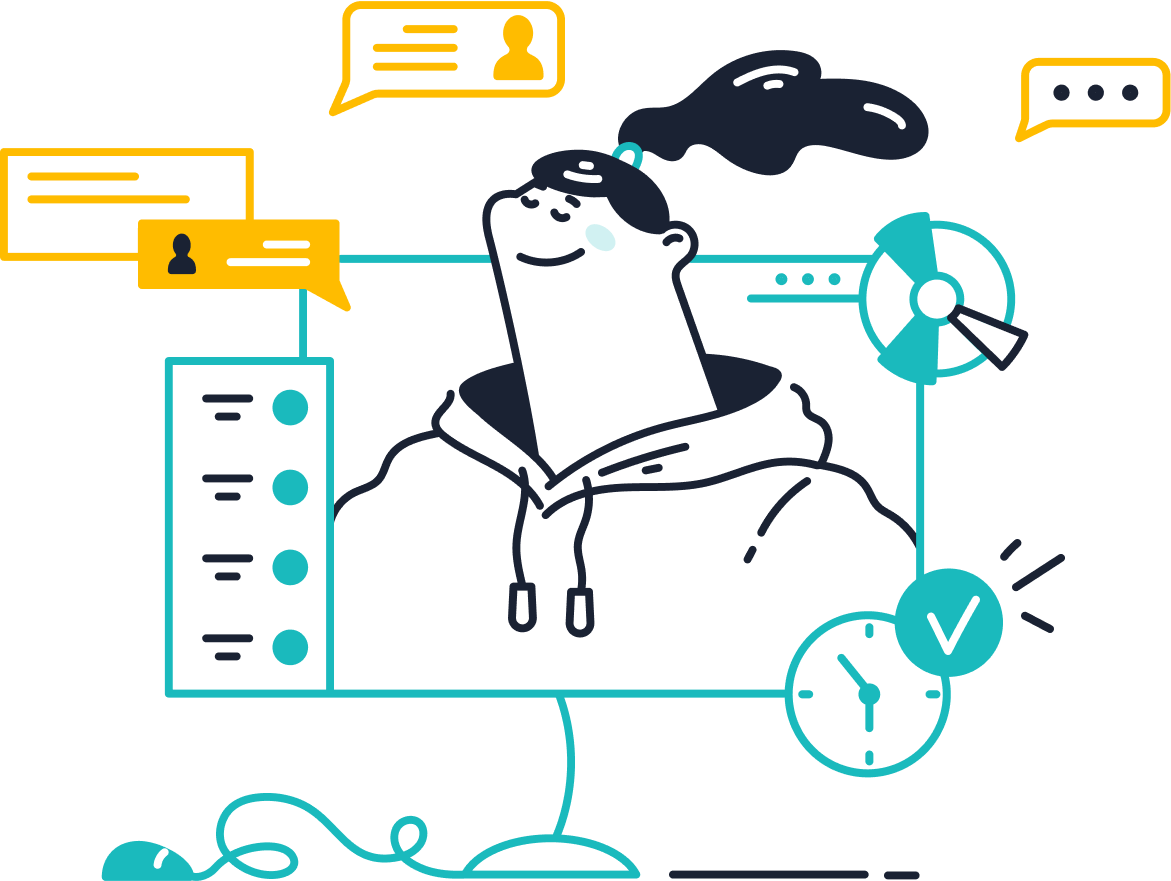
The platform also addresses common pain points by improving agent efficiency by 30% and achieving a 97% customer satisfaction score. Features like AI-powered tools and real-time analytics help you respond to customer needs instantly. For example, Sobot Live Chat’s auto-translation feature ensures smooth communication across languages, making your brand more accessible.
By integrating Sobot Live Chat, you can enhance every stage of the customer journey. Whether resolving issues quickly or providing personalized interactions, this tool empowers you to exceed customer expectations and foster loyalty.
Overcoming Challenges in Customer Experience Optimization
Addressing Data Silos and Accessibility Issues
Data silos and limited accessibility create significant obstacles in delivering exceptional customer experiences. When data remains isolated across departments, it becomes difficult to provide accurate and timely service. Customers often face long wait times, repeated questions, and inconsistent responses, which can erode trust. Poor data quality further compounds these issues, leading to decisions based on inaccurate information.
| Evidence Description | Impact on Customer Experience |
|---|---|
| Difficulty in providing accurate customer service due to siloed data | Leads to long wait times, endless transfers, and customers having to repeat themselves. |
| Challenges in providing personalized and relevant experiences due to limited access | Results in suboptimal customer experiences. |
| Poor data quality from isolated systems | Causes inaccurate information, undermining customer trust and potentially impacting revenue. |
| Inconsistent data undermines quality of customer insights | Essential for crafting personalized marketing campaigns and enhancing overall customer experiences. |
To overcome these challenges, you need tools that unify data and improve accessibility. Sobot’s Live Chat integrates customer records across platforms, ensuring agents have the information they need to deliver seamless support. Features like built-in analytics and system integration help eliminate data fragmentation, enabling you to craft personalized experiences that resonate with your audience.
Choosing the Right Tools and Technologies
Selecting the right tools for customer experience optimization requires careful planning. Start by mapping the customer journey to identify areas for improvement. Define your goals, such as enhancing Voice of Customer (VOC) insights or improving omnichannel alignment. Prioritize features that align with your business objectives, such as real-time analytics or AI-driven personalization.
- Map the Customer Journey: Identify opportunities to enhance customer experiences.
- Define Core Components: Determine what tools can boost immersion and engagement.
- Prioritize Omnichannel Alignment: Ensure seamless communication across platforms.
- Analyze Reporting Options: Evaluate how data will be visualized and reported.
- Choose a Deployment Strategy: Decide how to integrate the technology into workflows.
Sobot’s AI solutions offer a comprehensive approach to CX optimization. With omnichannel support and scenario-based AI, you can streamline communication and improve customer satisfaction. These tools not only enhance operational efficiency but also empower you to deliver tailored experiences that drive loyalty.
Balancing Automation with Human Touch
Automation plays a vital role in improving efficiency, but it cannot replace human empathy. AI-powered tools reduce wait times and operational costs, ensuring consistent service. However, customers still value human interactions for complex or emotional issues. Balancing automation with a human touch is essential for maintaining satisfaction.
- Automation through AI reduces wait times and operational costs, enhancing service consistency.
- Human empathy remains a key driver of customer satisfaction, especially for complex interactions.
- Successful companies integrate AI to complement human capabilities, ensuring emotional intelligence and creativity remain central to customer service.
Sobot’s Live Chat exemplifies this balance. Its AI-powered tools handle repetitive inquiries, freeing agents to focus on more nuanced issues. Features like intelligent assignment and real-time analytics ensure efficiency without compromising the personal touch. By integrating automation with human expertise, you can create a customer experience that is both efficient and empathetic.
Measuring Success with Key Performance Indicators (KPIs)
Tracking the success of your customer experience (CX) optimization efforts requires clear and measurable goals. Key performance indicators (KPIs) provide a structured way to evaluate how well your strategies are working. By focusing on the right metrics, you can identify areas for improvement and ensure your efforts align with customer expectations.
Some of the most effective KPIs for CX optimization include:
- Customer Satisfaction Score (CSAT): Measures how happy customers are with a specific interaction or service. A high CSAT indicates that your team is meeting customer needs effectively.
- Net Promoter Score (NPS): Gauges customer loyalty by asking how likely they are to recommend your brand. A rising NPS suggests stronger customer relationships.
- Customer Retention Rate: Tracks the percentage of customers who continue to engage with your brand over time. Higher retention rates often reflect a positive customer experience.
- First Response Time (FRT): Measures how quickly your team responds to customer inquiries. Faster response times lead to higher satisfaction levels.
- Customer Effort Score (CES): Evaluates how easy it is for customers to resolve their issues. Lower effort scores indicate smoother experiences.
Using KPIs helps you address challenges like identifying weak points in your customer journey. For example, if your NPS is low, you can analyze feedback to uncover dissatisfaction drivers. Data shows that 33% of customers will leave a brand after one bad experience, and 92% will leave after two or three. Monitoring KPIs allows you to act before these issues escalate.
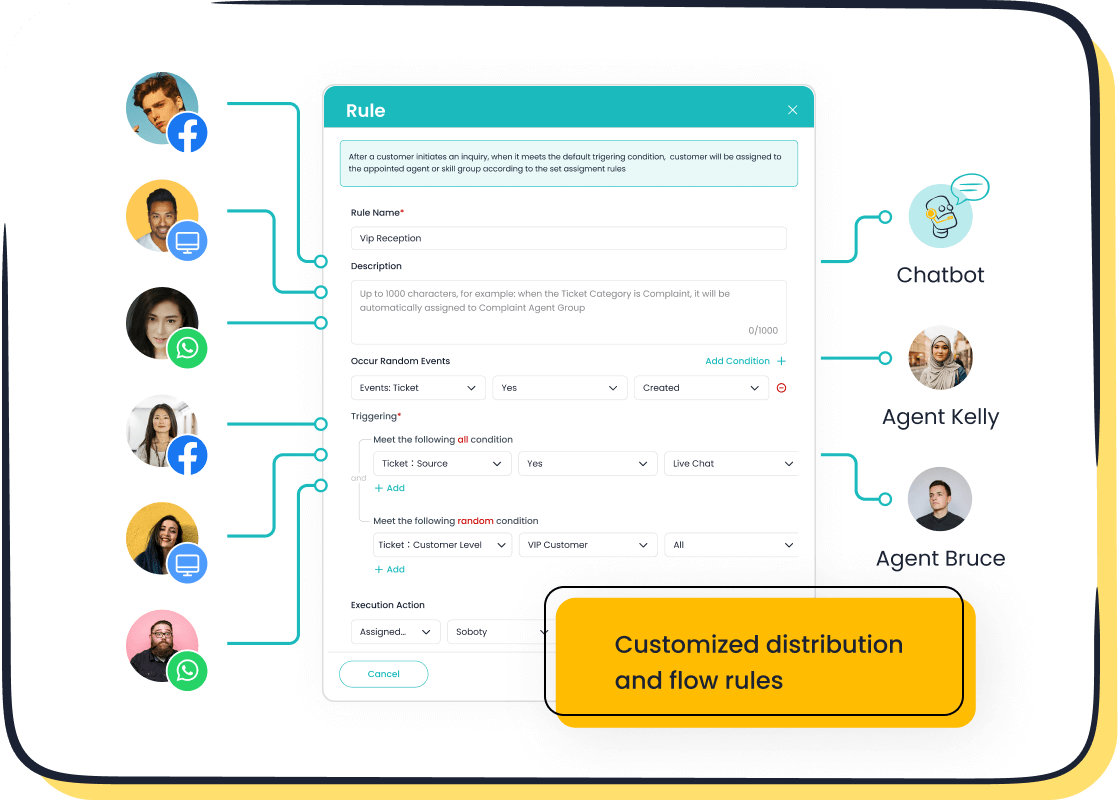
Sobot’s Live Chat supports KPI tracking by offering built-in analytics. It evaluates over 150 indicators, helping you measure metrics like response times and customer satisfaction. This data empowers you to make informed decisions and refine your CX strategies. With tools like Sobot, you can ensure your KPIs reflect real progress and drive long-term success.
Tip: Regularly review your KPIs to adapt to changing customer needs. This proactive approach keeps your CX optimization efforts on track.
Actionable Steps to Master CX Optimization in 2025
Leveraging Data Analytics for Informed Decision-Making
Data analytics is the backbone of effective customer experience optimization. It helps you make informed decisions by uncovering patterns, trends, and opportunities hidden in customer interactions. By analyzing this data, you can identify what works and what doesn’t, enabling you to refine your strategies.
For example, using analytics to study customer feedback can reveal recurring issues. Addressing these proactively improves satisfaction and reduces churn. A study by McKinsey & Company found that organizations leveraging data-driven decision-making are 23 times more likely to acquire customers and 19 times more likely to be profitable. This underscores the importance of integrating analytics into your CX strategy.
| Benefit of Data Analytics | Example of Application |
|---|---|
| Improved customer service | Analyzing feedback to identify common issues and address them proactively. |
| Personalized experiences | Using browsing behavior and purchase history to tailor shopping experiences. |
| Enhanced operational efficiency | Streamlining processes based on data insights to optimize resource allocation. |
Sobot’s Live Chat offers built-in analytics that evaluates over 150 indicators. These insights help you track metrics like response times and customer satisfaction, ensuring your decisions are backed by real-time data. By leveraging such tools, you can minimize guesswork and adapt quickly to market changes, keeping your business ahead of the curve.
Tip: Regularly review your analytics reports to spot emerging trends and adjust your strategies accordingly. This proactive approach ensures continuous improvement in your customer experience optimization efforts.
Personalizing Interactions with AI and Automation
Personalization is no longer a luxury—it’s a necessity. Customers expect tailored experiences that reflect their preferences and needs. AI and automation make this possible by analyzing customer data and delivering personalized interactions at scale.
For instance, AI can recommend products based on browsing history or past purchases, significantly boosting engagement. A case study involving a top retailer showed that implementing an AI assistant led to a 50% deflection rate for order-related inquiries, saving $7 million in support costs. Additionally, businesses using AI for personalization report a 97% lift in sales revenues and a 63% increase in conversion rates.
| Benefit | Percentage |
|---|---|
| Lift in sales revenues | 97% |
| Improved customer experiences | 64% |
| Increased conversion rates | 63% |
| Increased visitor engagement | 55% |
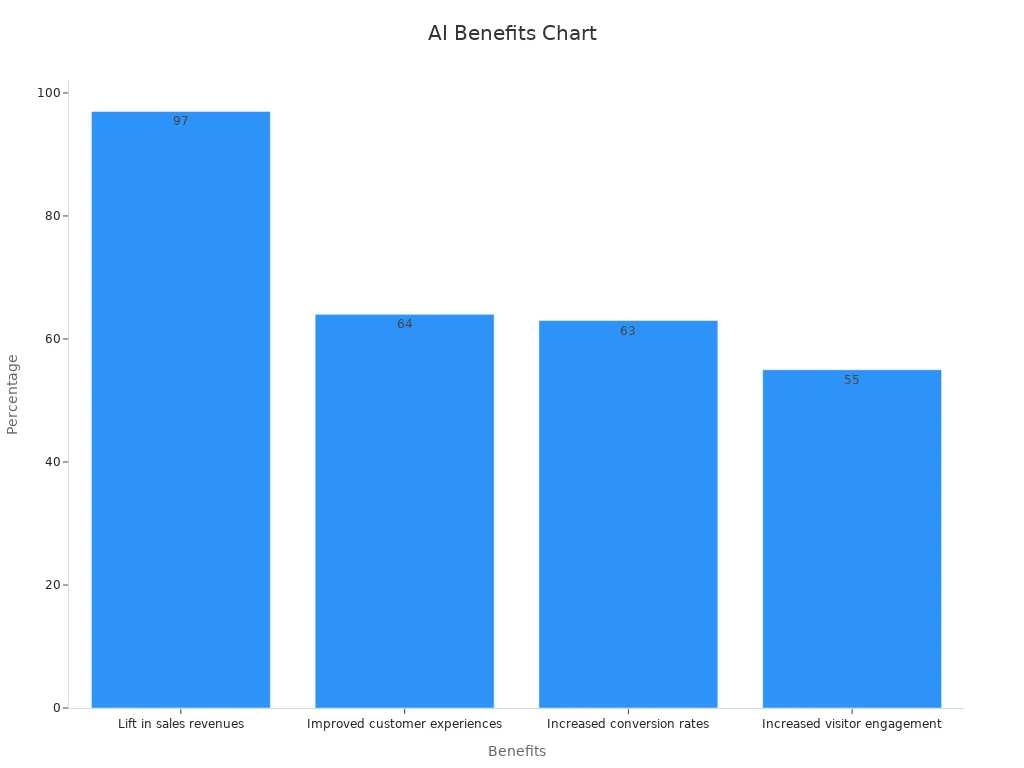
Sobot’s Live Chat exemplifies the power of AI-driven personalization. Its AI-assisted tools analyze customer data to deliver tailored interactions across multiple channels. Features like intelligent assignment and auto-translation ensure every customer feels valued, regardless of their language or location. By integrating AI and automation, you can enhance customer satisfaction while reducing operational costs.
Note: Start small by automating routine tasks like FAQs or order tracking. Gradually expand to more complex interactions as your team becomes comfortable with the technology.
Streamlining Communication Channels with Sobot Live Chat
Efficient communication is the cornerstone of a great customer experience. Fragmented channels lead to inconsistent service and frustrated customers. Streamlining these channels ensures seamless interactions, improving satisfaction and loyalty.
Sobot Live Chat simplifies communication by unifying platforms like WhatsApp, Facebook, and Instagram into a single workspace. This omnichannel approach eliminates the need to switch between tools, saving time and reducing errors. The platform also supports real-time responses, ensuring customers receive timely assistance.
| Metric | Value |
|---|---|
| Reduction in inbound discussion volume | 20% |
| Positive feedback rate | 96% + |
| Correct answers provided by AI | 80% |
| Customer satisfaction rate | 95% |
| Self-service question resolution | 22.2% |
| CSAT score | 97% |
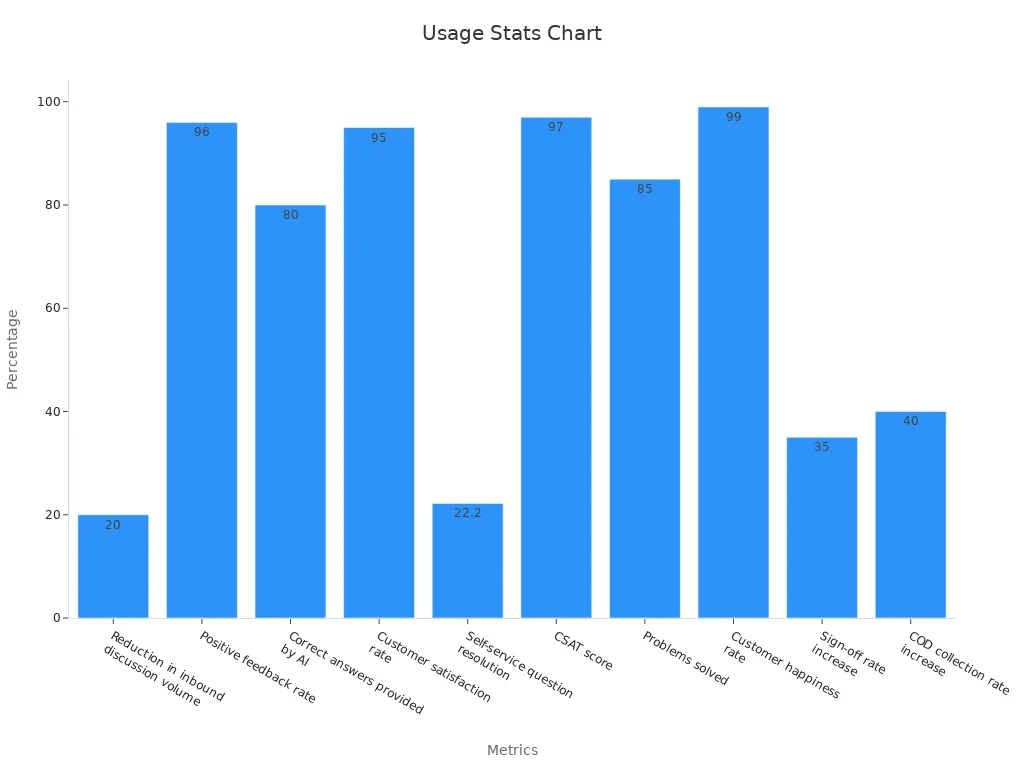

By integrating Sobot Live Chat, you can reduce inbound discussion volume by 20% and achieve a 97% CSAT score. Its AI-powered tools handle repetitive inquiries, freeing agents to focus on complex issues. This balance between automation and human touch ensures a superior customer experience.
Tip: Use Sobot’s built-in analytics to monitor communication trends and identify areas for improvement. This data-driven approach helps you refine your strategies and maintain high satisfaction levels.
Collecting and Acting on Customer Feedback
Customer feedback is the lifeblood of customer experience optimization. It provides valuable insights into what your customers value and where they encounter challenges. By proactively collecting and acting on feedback, you can transform your customer experience strategy and foster customer loyalty.
To make the most of customer feedback, follow these steps:
- Identify Trends and Patterns: Analyze feedback for recurring themes. For example, if multiple customers mention slow response times, prioritize improving your support speed.
- Segment Your Data: Group feedback by demographics or purchase history. This helps you tailor solutions to specific customer needs.
- Prioritize Areas for Improvement: Focus on issues with the highest impact, such as resolving pain points that affect customer satisfaction scores.
- Create an Action Plan: Develop clear goals and assign responsibilities. For instance, if customers request faster resolutions, implement tools like Sobot Live Chat to streamline communication.
- Implement Changes: Execute your plan diligently. Enhance processes or features based on feedback, such as adding auto-translation for multilingual support.
- Monitor and Measure Progress: Track metrics like Net Promoter Score (NPS) to evaluate the effectiveness of your changes.
- Solicit Follow-Up Feedback: Reach out to customers after implementing changes. This shows you value their input and helps refine your strategies further.
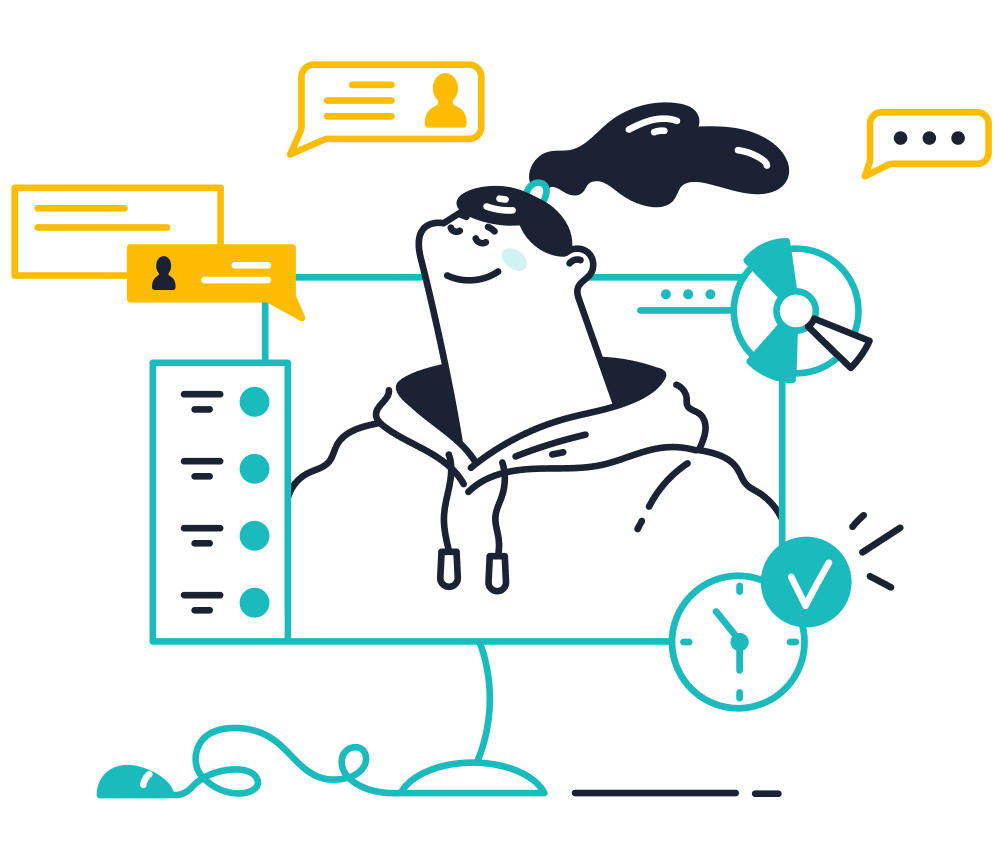
For example, OPPO leveraged Sobot’s solutions to optimize its customer service. By integrating feedback into its strategy, OPPO achieved an 83% chatbot resolution rate and a 94% positive feedback rate. These results highlight the importance of acting on customer insights to drive measurable improvements.
Tip: Use tools like Sobot’s built-in analytics to evaluate over 150 indicators. This ensures your feedback-driven strategies are backed by data, helping you make informed decisions.
Training Teams to Deliver Exceptional Customer Experiences
Your team plays a pivotal role in delivering exceptional customer experiences. Training equips them with the skills and knowledge needed to address customer challenges effectively and foster customer loyalty.
Effective training programs focus on practical scenarios and measurable outcomes. For instance:
- Understanding Call Analytics: Teach your team to analyze customer interactions. This helps identify preferences and pain points, enabling them to provide tailored solutions.
- Improving Decision-Making: Equip employees with tools like Sobot’s AI copilots. These assist agents in generating accurate responses, enhancing both efficiency and customer satisfaction.
| Metric | Description |
|---|---|
| Customer Satisfaction Scores | Regular surveys assess the quality of experiences delivered by trained employees. Higher scores indicate effective training. |
| Employee Productivity Rate | Measures productivity levels before and after training to evaluate the impact on individual and team performance. |
For example, companies that embrace call analytics report higher customer satisfaction rates. Training employees to use these insights improves their ability to resolve issues quickly and accurately. This approach aligns with Sobot’s solutions, which integrate AI-powered tools to enhance agent efficiency by 30%.
Note: Regularly update training programs to reflect evolving customer expectations. This ensures your team remains equipped to deliver exceptional experiences.
Customer experience optimization in 2025 is a game-changer for businesses aiming to thrive. Companies with mature CX strategies achieve at least 10% revenue growth, while satisfied customers spend 140% more. To overcome challenges, focus on linking CX metrics to business outcomes and demonstrating quick wins. Tools like Sobot Live Chat streamline communication, enhance personalization, and improve retention. By prioritizing CX, you position your business as a leader in customer satisfaction and loyalty.
| Statistic/Trend | Impact on Business Performance |
|---|---|
| Companies with mature CX strategies | Achieved at least 10% revenue growth |
| Satisfied customers | Spend 140% more than those with poor experiences |
| Positive customer experiences | Contribute to up to 70% of buying experiences |
| Willingness to pay more for great CX | 86% of buyers are willing to pay more |
| Increase in AOV through personalization | Up to 15% increase while reducing service costs |
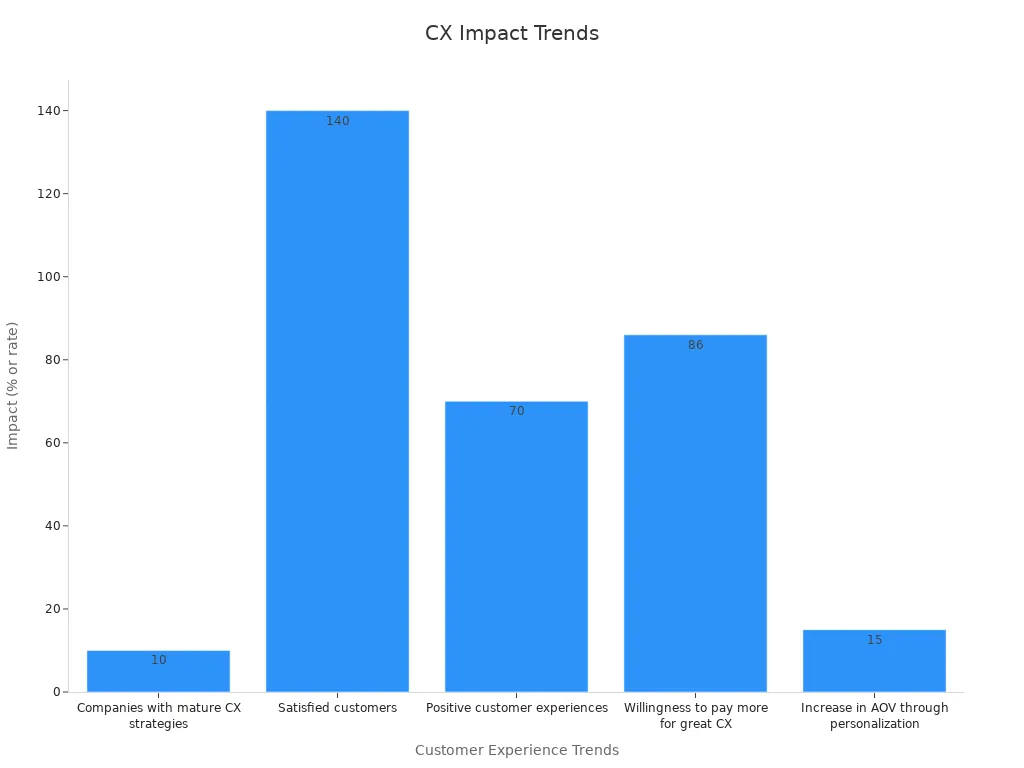
Tip: Start your CX journey today with Sobot Live Chat to deliver seamless, personalized, and efficient customer interactions.
FAQ
1. What is customer experience optimization, and why does it matter?
Customer experience optimization improves every interaction customers have with your brand. It matters because 86% of buyers will pay more for great experiences, and companies with strong CX strategies see 10% revenue growth. Tools like Sobot Live Chat help you achieve this by delivering seamless, personalized interactions.
2. How does Sobot Live Chat enhance customer experience optimization?
Sobot Live Chat unifies communication channels like WhatsApp, Facebook, and Instagram into one workspace. It uses AI to provide real-time responses, personalized interactions, and built-in analytics. This approach improves customer satisfaction, reduces churn, and increases conversion rates by up to 38%.
3. What industries benefit most from Sobot’s solutions?
Sobot serves industries like retail, financial services, gaming, and education. For example, OPPO improved its chatbot resolution rate to 83% and increased repurchase rates by 57% using Sobot’s AI-powered tools. These solutions adapt to diverse business needs.
4. How can I measure the success of my CX optimization efforts?
Track KPIs like Net Promoter Score (NPS), Customer Satisfaction Score (CSAT), and First Response Time (FRT). Sobot Live Chat evaluates over 150 indicators, helping you monitor metrics and refine strategies. Businesses using these tools report a 97% customer satisfaction rate.
5. Is Sobot Live Chat easy to integrate with existing systems?
Yes, Sobot Live Chat integrates seamlessly with platforms like websites, apps, and social media. It also connects with your CRM and ticketing systems, ensuring agents access unified customer data. This integration simplifies workflows and enhances service efficiency.
See Also
Discovering Leading Cloud Contact Centers for 2025
Best Customer Feedback Software Options for 2024
Ten Essential Steps for Omnichannel Contact Center Setup
Comprehensive Reviews of Leading Contact Center Solutions 2024
